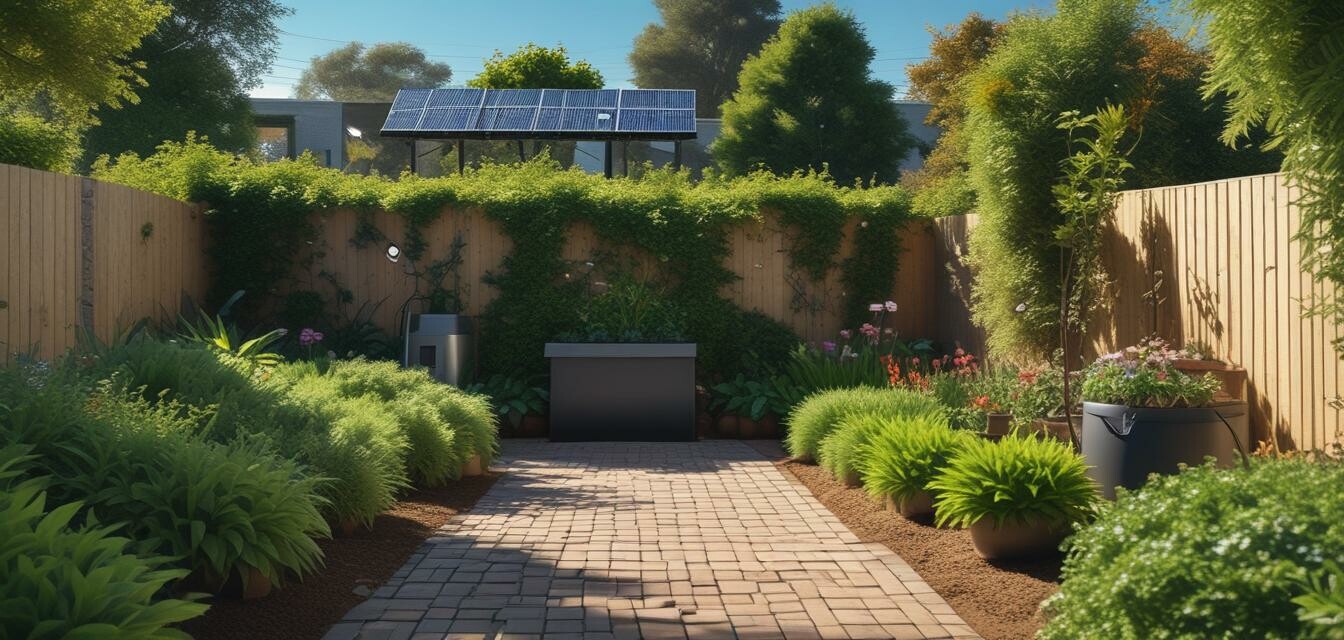
The role of technology in sustainable landscaping
Key Takeaways
- Technology enhances efficiency and management in landscaping.
- Innovative tools promote eco-friendly practices.
- Smart irrigation systems save water and reduce costs.
- Use of sustainable materials and green technology is on the rise.
- Automation in maintenance is becoming increasingly popular.
In recent years, the evolution of technology has transformed various fields, and landscaping is no exception. Sustainable landscaping practices are now integrating innovative tech solutions to improve efficiency, promote eco-friendliness, and enhance the beauty of outdoor spaces. In this article, we will explore how technology plays a pivotal role in shaping sustainable landscaping management and practices.
1. Efficient Water Management through Smart Irrigation
Water management is crucial in landscaping. Smart irrigation systems have revolutionized traditional watering methods, making them more efficient and effective.
| Technology | Description | Benefits |
|---|---|---|
| Drip Irrigation | Delivers water directly to plant roots. | Conserves water, reduces evaporation. |
| Smart Controllers | Automates watering schedules based on weather data. | Reduces water usage and maintenance needs. |
| Soil Sensors | Monitors soil moisture levels in real-time. | Ensures optimal watering to prevent overwatering. |
| Rainwater Harvesting Systems | Capture and store rainwater for future use. | Reduces dependence on municipal water sources. |
2. Sustainable Tools and Materials
In addition to water management, the tools and materials used in landscaping also contribute to sustainability. Emerging technologies focus on using eco-friendly materials that minimize environmental impact.
- Biodegradable garden supplies: Tools and materials that decompose over time, reducing waste.
- Recycled materials: Utilizing recycled plastics, metals, and woods for landscaping features.
- Solar-powered equipment: Lawn mowers and lights that utilize solar energy, reducing electricity use.
- Environmentally safe chemicals: Fertilizers and pesticides that are friendly to pollinators and the ecosystem.
3. Innovative Technology in Landscaping Design
Landscape design has also embraced technology with tools that help create stunning outdoor environments. Here are some notable advancements:
- 3D modeling software: Allows for realistic visualization of landscape designs before implementation.
- Drones: Used for aerial surveying and mapping of landscapes, making planning and monitoring more efficient.
- Augmented Reality (AR): Enhances the design process by projecting planting options onto real-world spaces.
- Landscape management software: Streamlines workflow with scheduling and maintenance tracking features.
4. Automation and Maintenance
Automation is an essential component of modern landscaping management, streamlining various maintenance tasks. This not only improves efficiency but also ensures that gardens remain healthy and vibrant.
| Automated System | Function | Benefits |
|---|---|---|
| Automated Lawn Mowers | Mows the lawn without manual intervention. | Consistent cutting and time savings. |
| Automated Fertilization Systems | Applies fertilizer in calculated doses at scheduled times. | Reduces waste and promotes healthy growth. |
| Smart Lighting Systems | Automates outdoor lighting based on time or motion sensors. | Enhances security and reduces energy consumption. |
5. Conclusion: The Future of Sustainable Landscaping
As we move forward, technology will continue to play a significant role in sustainable landscaping. From automated systems that manage maintenance to innovative materials that reduce environmental impact, the future looks promising for those who embrace these advancements.
If you want to stay ahead in the evolving landscape of gardening trends, consider exploring innovative irrigation systems and eco-friendly fertilizers in our Innovative Irrigation Systems and Eco-Friendly Fertilizers categories.
Pros
- Improved efficiency in landscaping tasks.
- Enhanced water conservation capabilities.
- Encourages the use of eco-friendly products.
- Automation saves time and labor costs.
Cons
- Initial investment costs can be high.
- Maintenance of technology may require expertise.
- Dependence on technology may reduce traditional skills.
For more insights on how modern technology reshapes landscaping, visit our News and Trends page to stay updated on the latest practices in gardening.